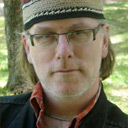
As the challenges of certifying forest ecosystem services persist, delegates at the U.N. climate summit in Warsaw are anticipating new insights from a meeting of certification organizations this weekend.
Building on their year-old alliance, The Gold Standard Foundation and Forest Stewardship Council (FSC) are joining forces with Fairtrade International to explore the challenges of certifying forest ecosystem services at the Global Landscapes Forum on November 16 and 17.
The organizations will participate in “Certifying ecosystem services in forestry and agriculture: Ensuring genuine MRV and social and environmental integrity at a landscape level,” one of 17 technical and networking sessions offered at the Forum.
Both FSC and Gold Standard were established by World Wide Fund for Nature (WWF). Since 1993, FSC has promoted forest management it bills as environmentally appropriate, socially beneficial and economically viable. The Gold Standard, established in 2003, has specialized in certifying renewable energy and energy efficiency projects to ensure that they demonstrate reductions in greenhouse gas (GHG) emissions and that they enable local-level sustainable development benefits that can be measured, reported and verified (MRV).
In 2012, FSC and The Gold Standard sealed a partnership that jointly recognized their respective approaches to socio-environmental safeguards and The Gold Standard’s approach to carbon certification. Their model for future collaboration foresees that The Gold Standard builds upon the global FSC Principles and Criteria for responsible forest management. In return, FSC will rely on The Gold Standard’s approach to carbon accounting and benefit-sharing when FSC-certified forest operations seek carbon finance.
“When we heard Gold Standard was moving into land-use certification, we thought that two sister organizations with exactly the same environmental and social interests could propose a package to the market,” said Grégory Jean, a policy manager at FSC who is co-facilitating the Warsaw session.
ENERGY VERSUS LAND USE
Certification involves MRV to ensure that a promised outcome — such as the reduction of a ton of emissions — actually takes place. While certification for such tangible products as fairly traded coffee and sustainable timber is proven and tested, the shift toward certifying less tangible ecosystem services is relatively new.
It’s complex and challenging, but people are working every day on new and better techniques
Initially, The Gold Standard and FSC will focus on afforestation and reforestation projects. In collaboration with stakeholders, the two partners will further align their systems to cover improved forest management projects, as well as additional forest ecosystem services such as water or biodiversity potentially through REDD+ projects.
“There is a big difference between certifying energy projects and land-use projects,” said co-facilitator Pieter van Midwoud, The Gold Standard’s director of business development, land use and forests. A renewable energy project, such as a more efficient cook stove that leads to less timber use, has an indirect impact on the landscape, he said. Conversely, a land-use initiative is applied directly on the soil, which requires more attention to impact — both positive and negative — on biodiversity and ecosystems.
“With satellite images, we can get a very detailed picture of what’s happening,” he said. “It’s complex and challenging, but people are working every day on new and better techniques.”
A WORK IN PROGRESS
FSC is currently developing indicators to provide specific requirements related to ecosystem services. Meanwhile, FSC and the Center for International Forestry Research (CIFOR) are working together to measure the impact of certification over time, looking particularly at biodiversity, carbon and social impacts. They plan to test how to measure the impact of management on specific ecosystem services in 10 pilot sites in four countries.
CIFOR and FSC are also working on a global market analysis, said Alison von Ketteler, who manages FSC’s Forest Certification for Ecosystems Services (ForCES) program. As part of this process, they are determining whether current certificate holders would be willing to enhance their certification to include forest ecosystem services. They have also been soliciting certification bodies and “supporters” — NGOs and development agencies working on certification — to gauge their capacity to offer training and certification related to forest ecosystem services.
“We know there are several potential markets, either public or private,” she said. “We’re working on refining which markets are the best bets.”
“We should not be too afraid of complex challenges,” van Midwoud said. “There’s a lot of frustration out there with all these certification standards that are more or less the same, but not exactly the same. At our event in Warsaw, we want to show how we are bringing together the two approaches of The Gold Standard and FSC on a large-scale, landscape level.”
To learn more about the Global Landscapes Forum, click here http://www.landscapes.org
We want you to share Forests News content, which is licensed under Creative Commons Attribution-NonCommercial-ShareAlike 4.0 International (CC BY-NC-SA 4.0). This means you are free to redistribute our material for non-commercial purposes. All we ask is that you give Forests News appropriate credit and link to the original Forests News content, indicate if changes were made, and distribute your contributions under the same Creative Commons license. You must notify Forests News if you repost, reprint or reuse our materials by contacting forestsnews@cifor-icraf.org.
























